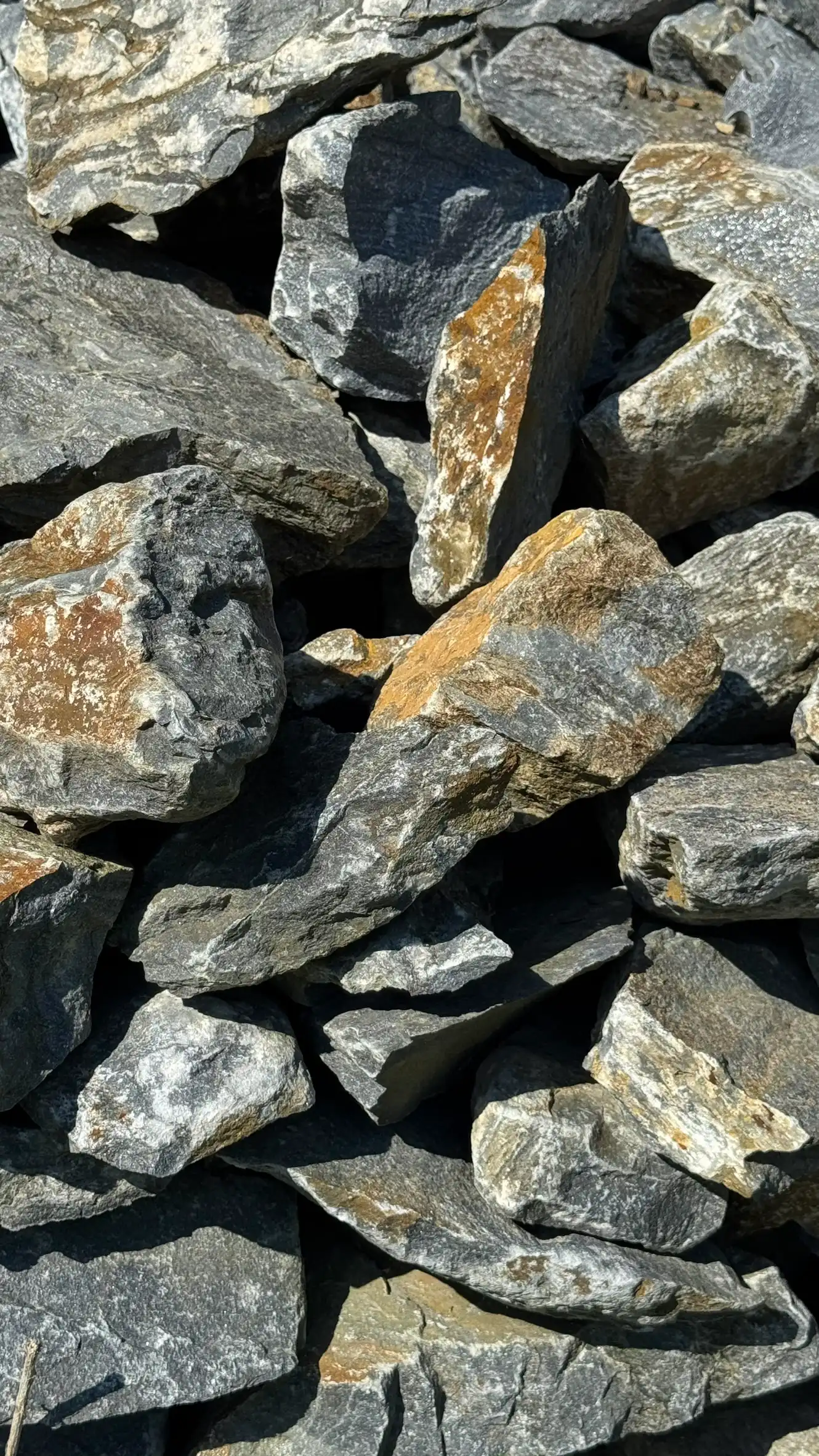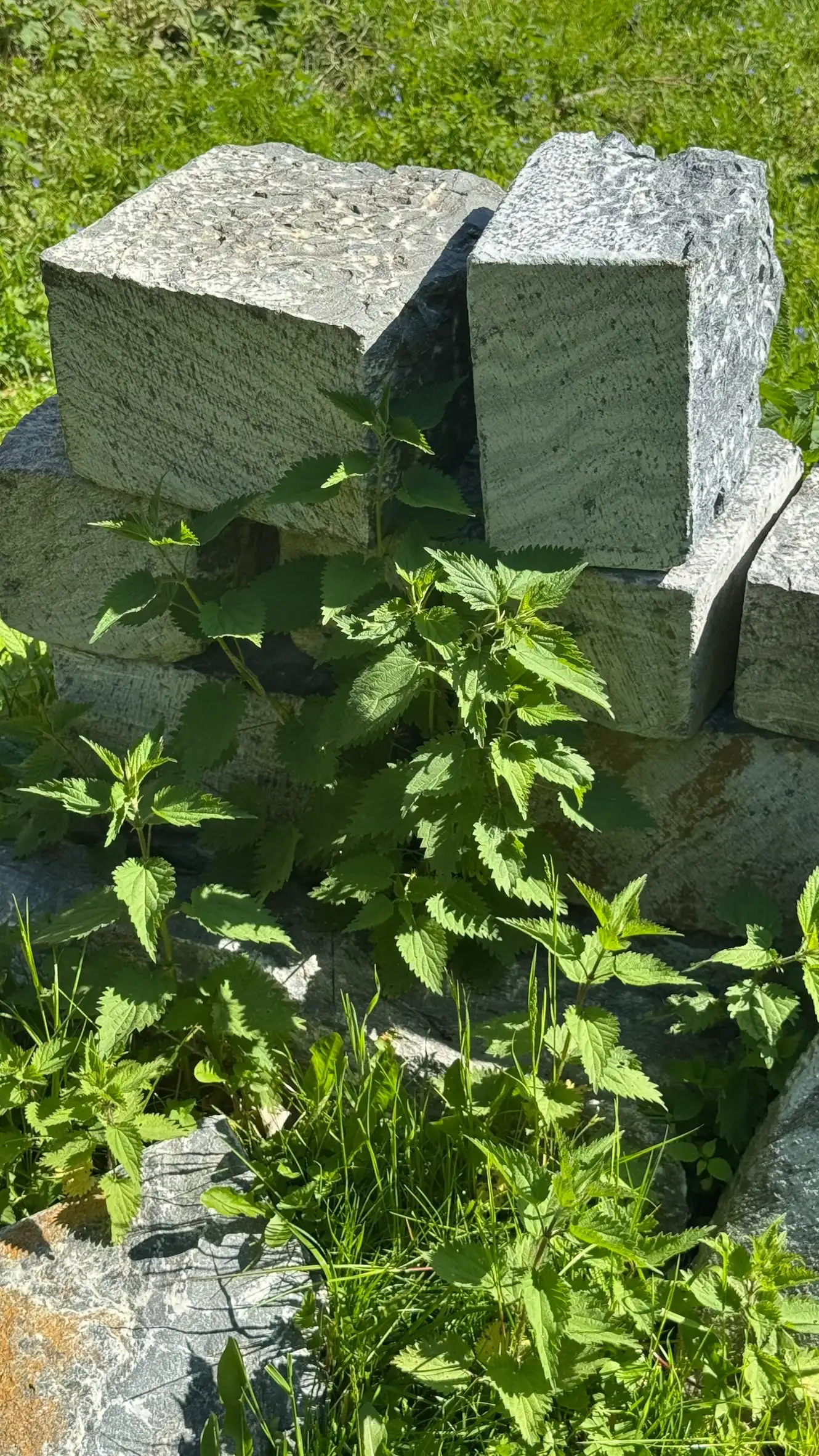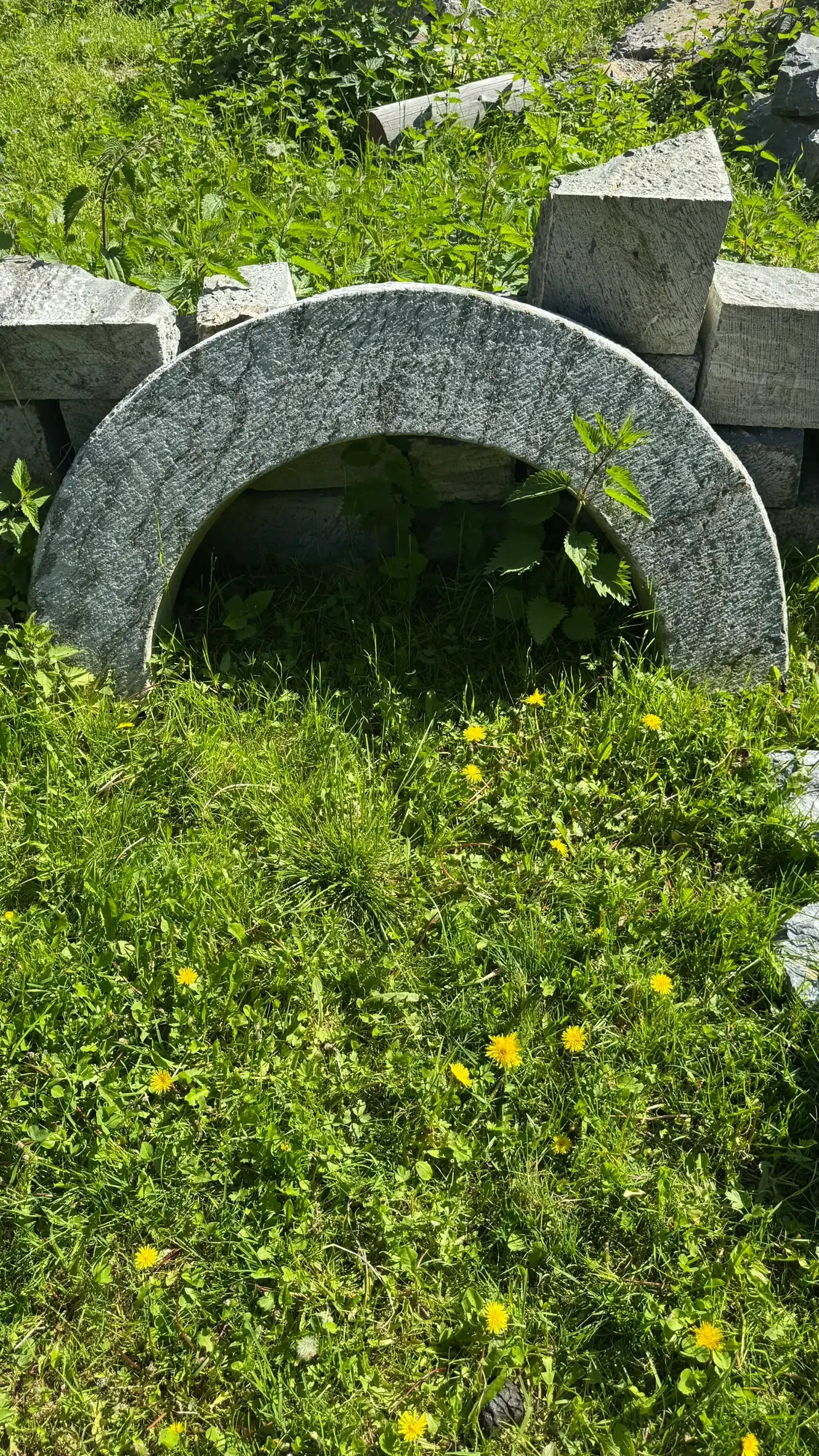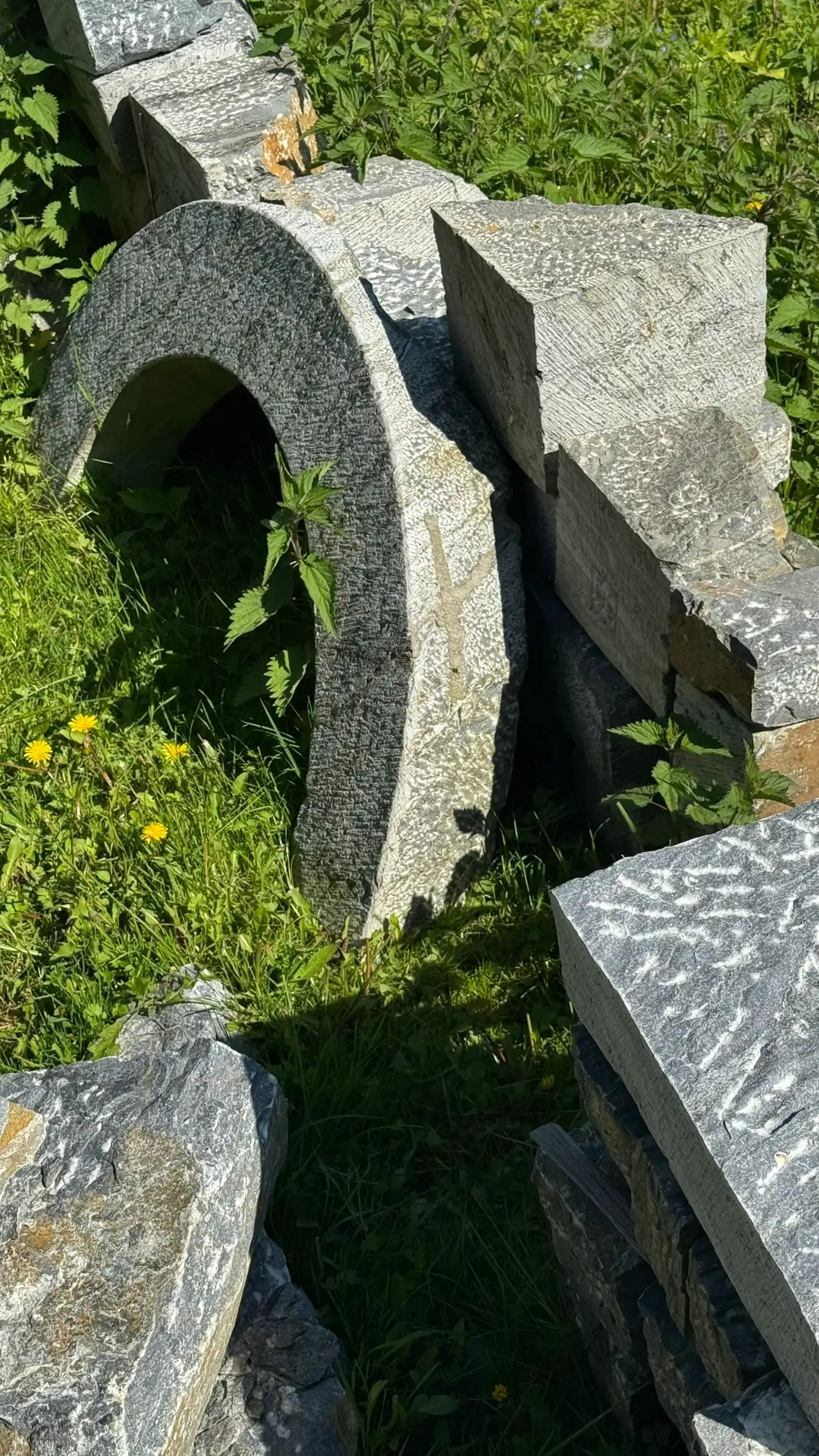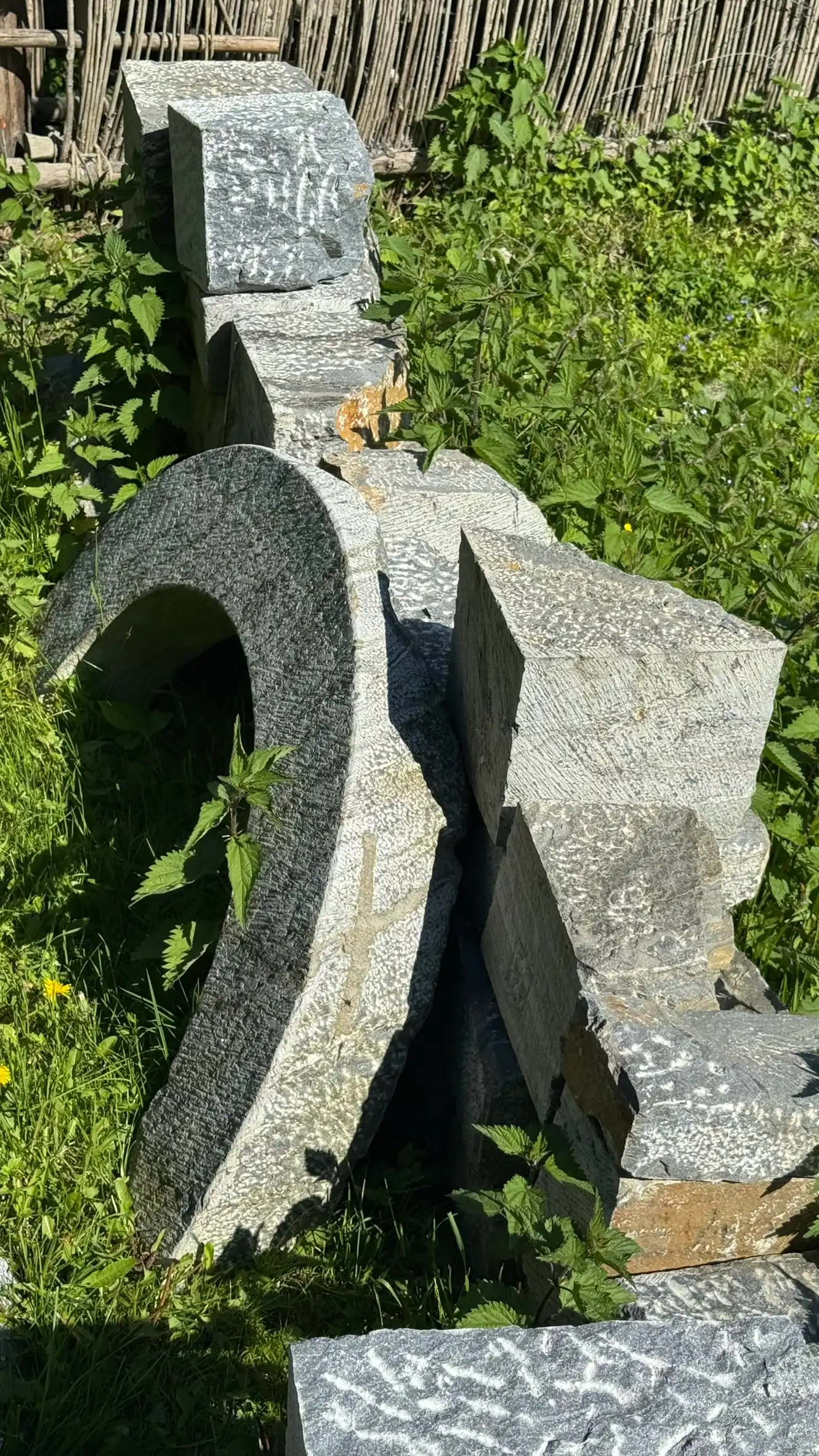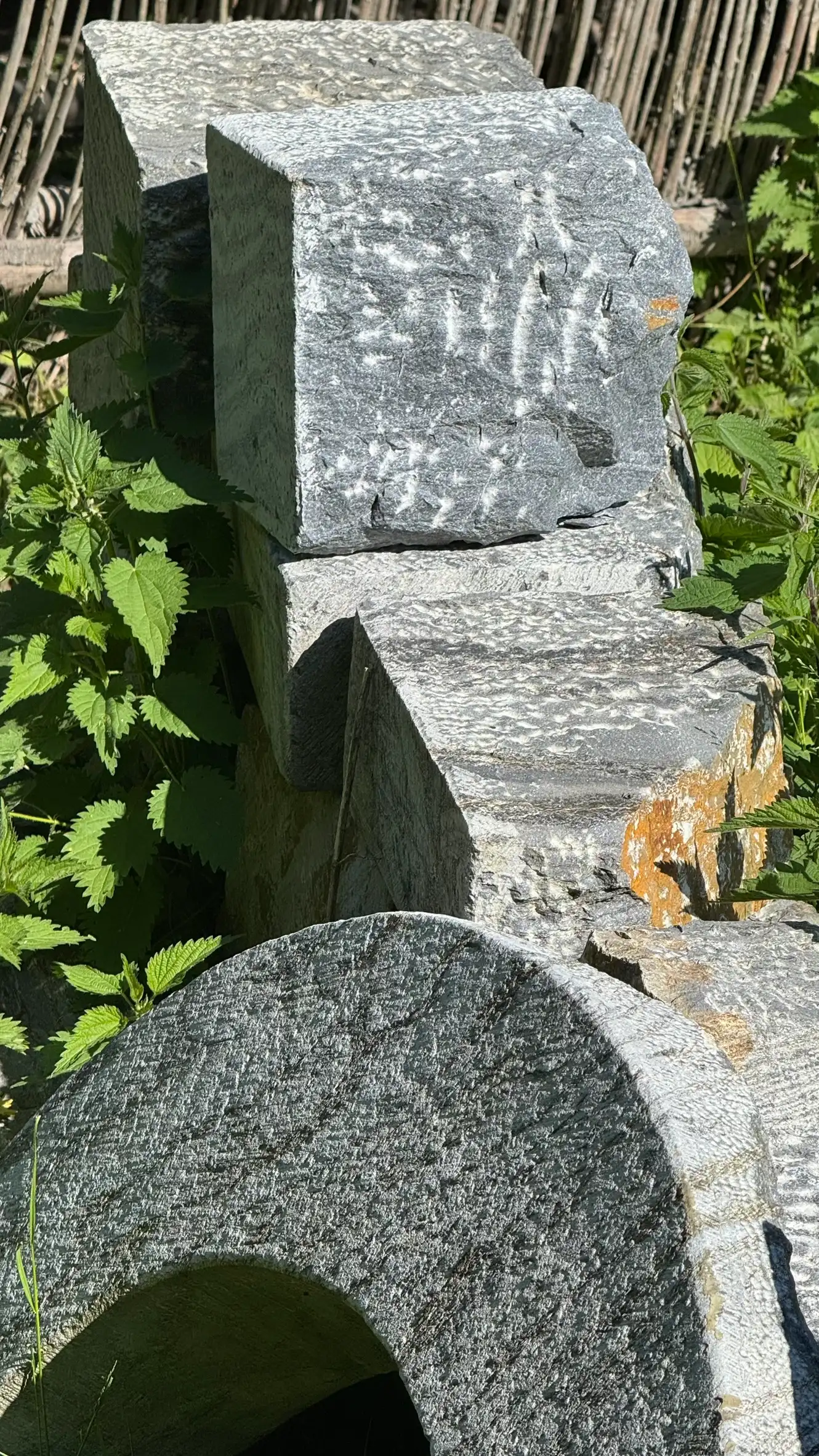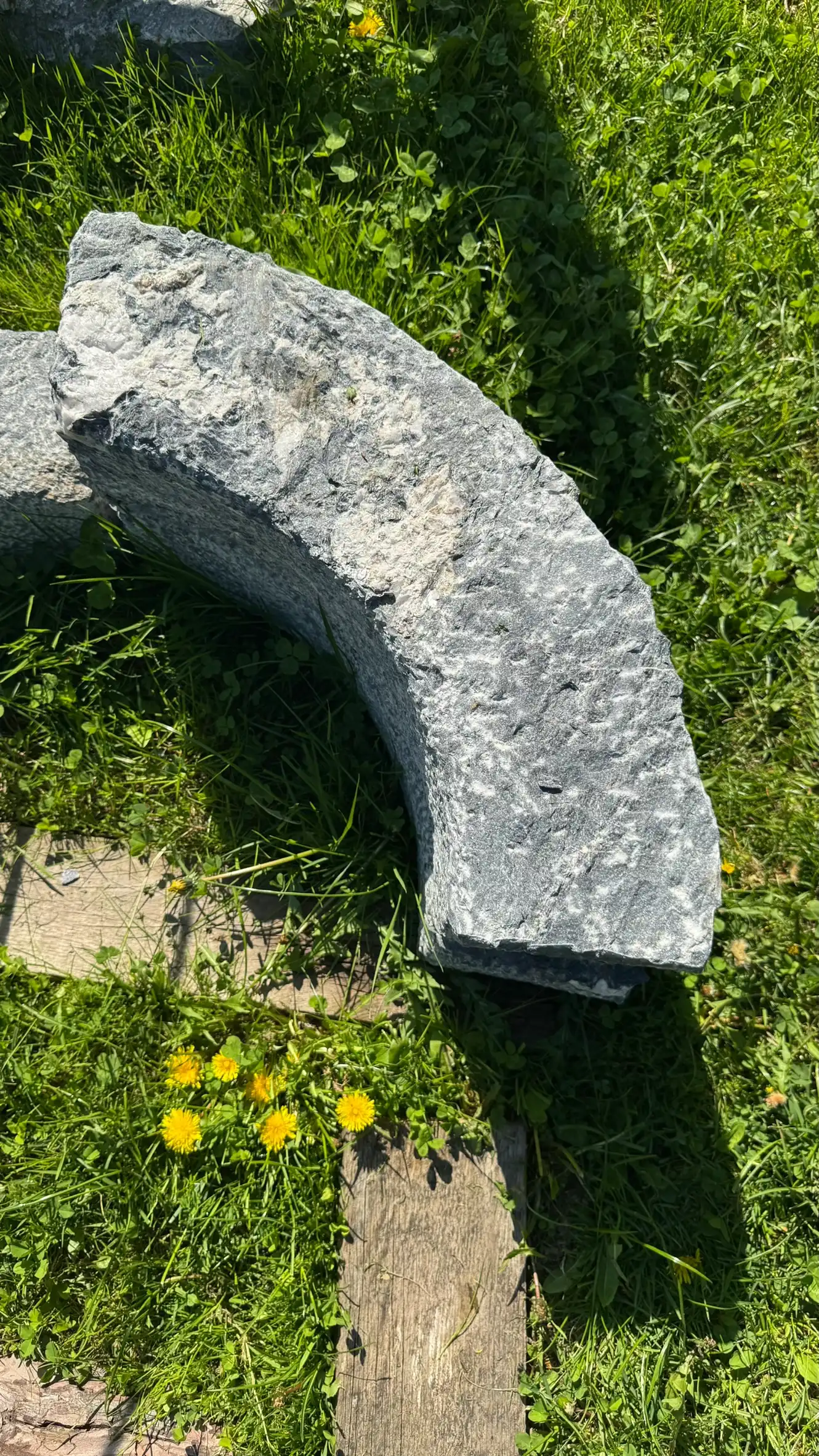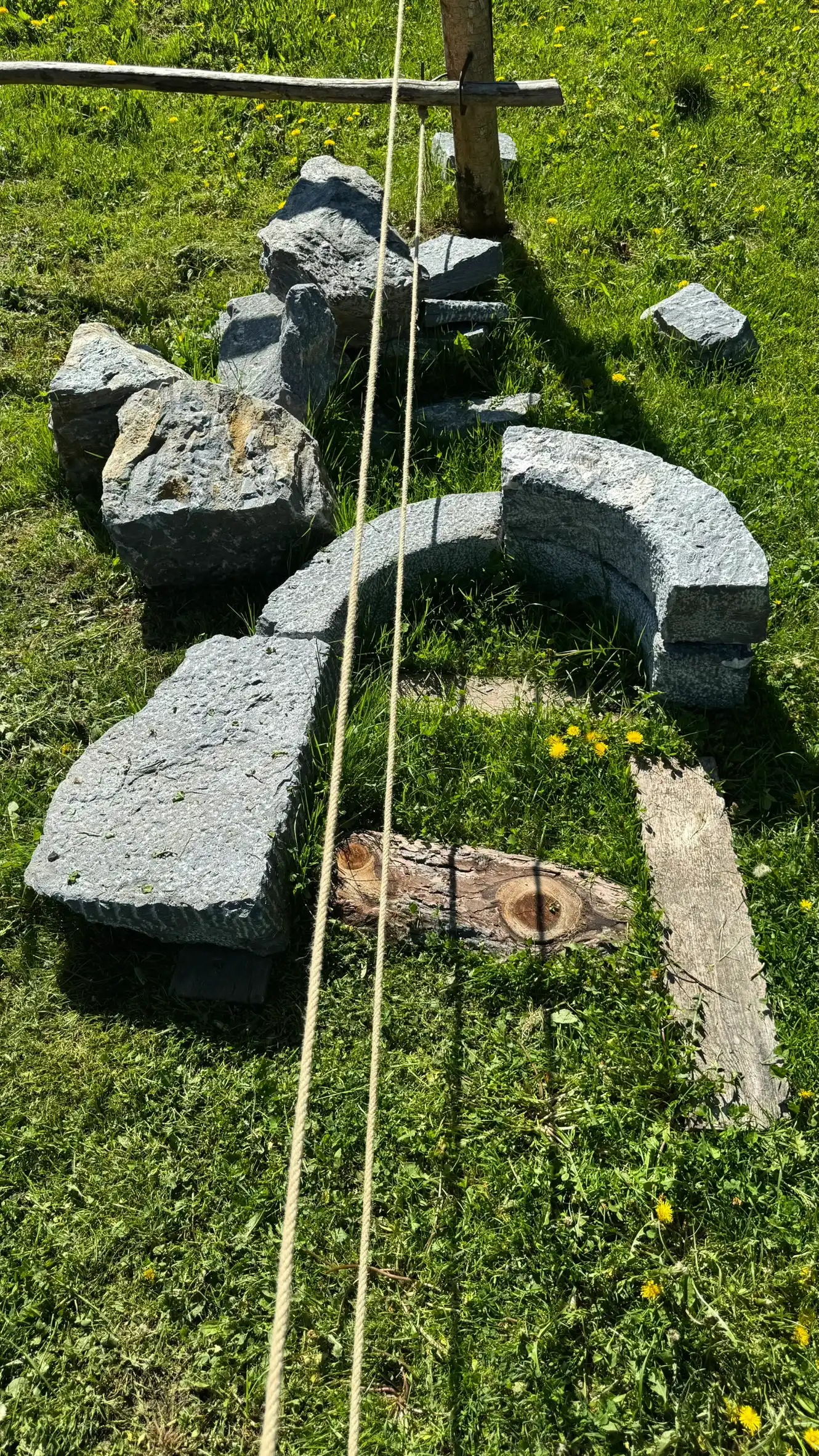Stone Depot
Numerous marble deposits can be found in the Gurktal Alps. For the most part, these are no longer exploited today. The marble formations west of the town were used in medieval buildings in Friesach. This marble is known as Friesach Marble. For the construction of Burgbau Friesach, stones are currently delivered from the municipality of Metnitz (Teichlgraben quarry).
As a rule, stone was quarried in the surrounding area. In the Middle Ages, care was taken to ensure that sufficient building material was available near the construction site. Stone, timber, sand, gravel, clay, and water were all essential. The cost-effective and unhindered procurement of materials, along with rapid and preferably inexpensive transport to the site, ensured smooth and swift construction progress. After all, it is known that transporting dressed stone (for example, by horse-drawn carts) over a distance of 18 kilometres could double production costs.
At the castle construction site, rough stones of various sizes (up to 400 kg) are delivered by modern lorries. For processing, standard masonry tools and stone hammers (5 or 7 kg) are used to reduce oversized stones to a manageable size, where necessary.
The shape of the stones is determined by natural layering and the method of extraction from the quarry. The natural fracturing behaviour of the material used has a significant impact on the final appearance. Furthermore, the stones are “worked to shape”: they are not only broken, but also further shaped, primarily using the stone hammer.
However, the front and internal faces of the stones must not be worked. The advantage of this method is that it facilitates the subsequent laying of the stones by the mason, due to smoother bedding and joint surfaces, and it also improves the visual appearance of the wall through the smoother finish (“hammer-finished” masonry).
In the first 15 years, around 3,000 tonnes of rough stone have been delivered and processed. The chippings are used to fill the cores of shell masonry.

